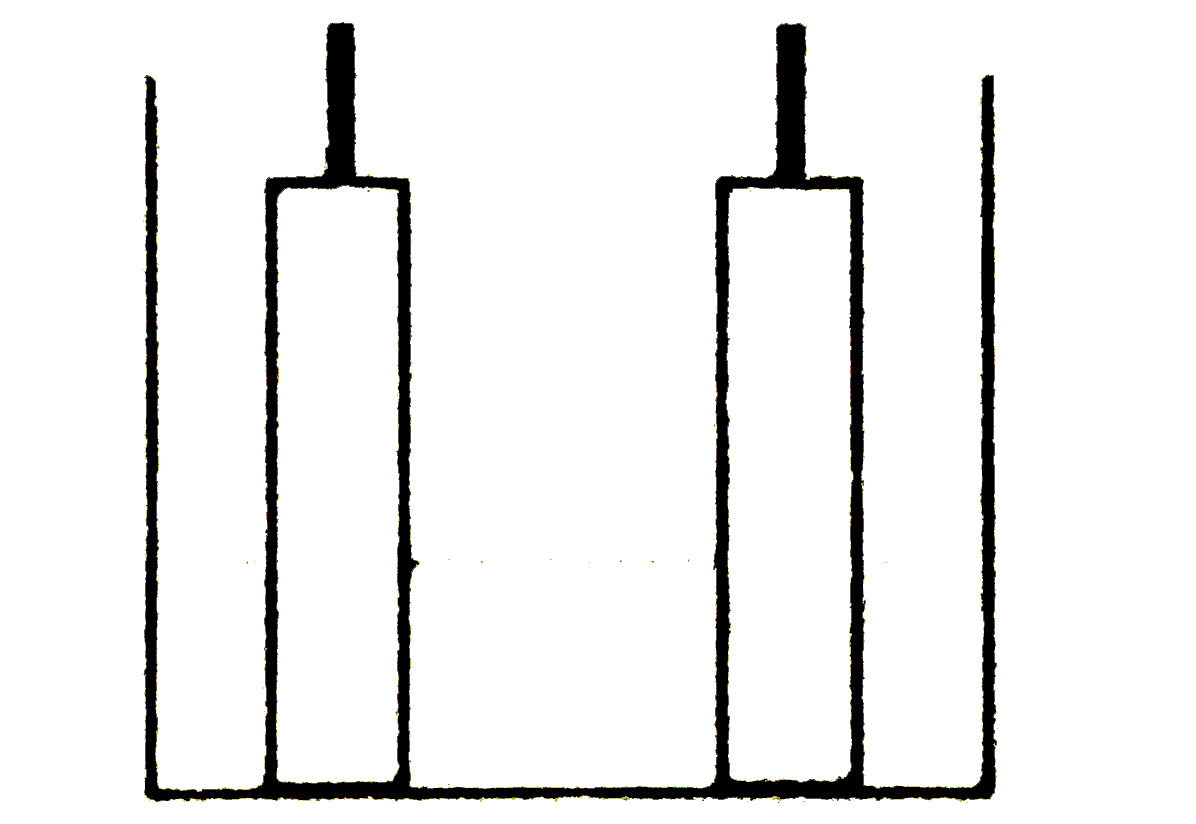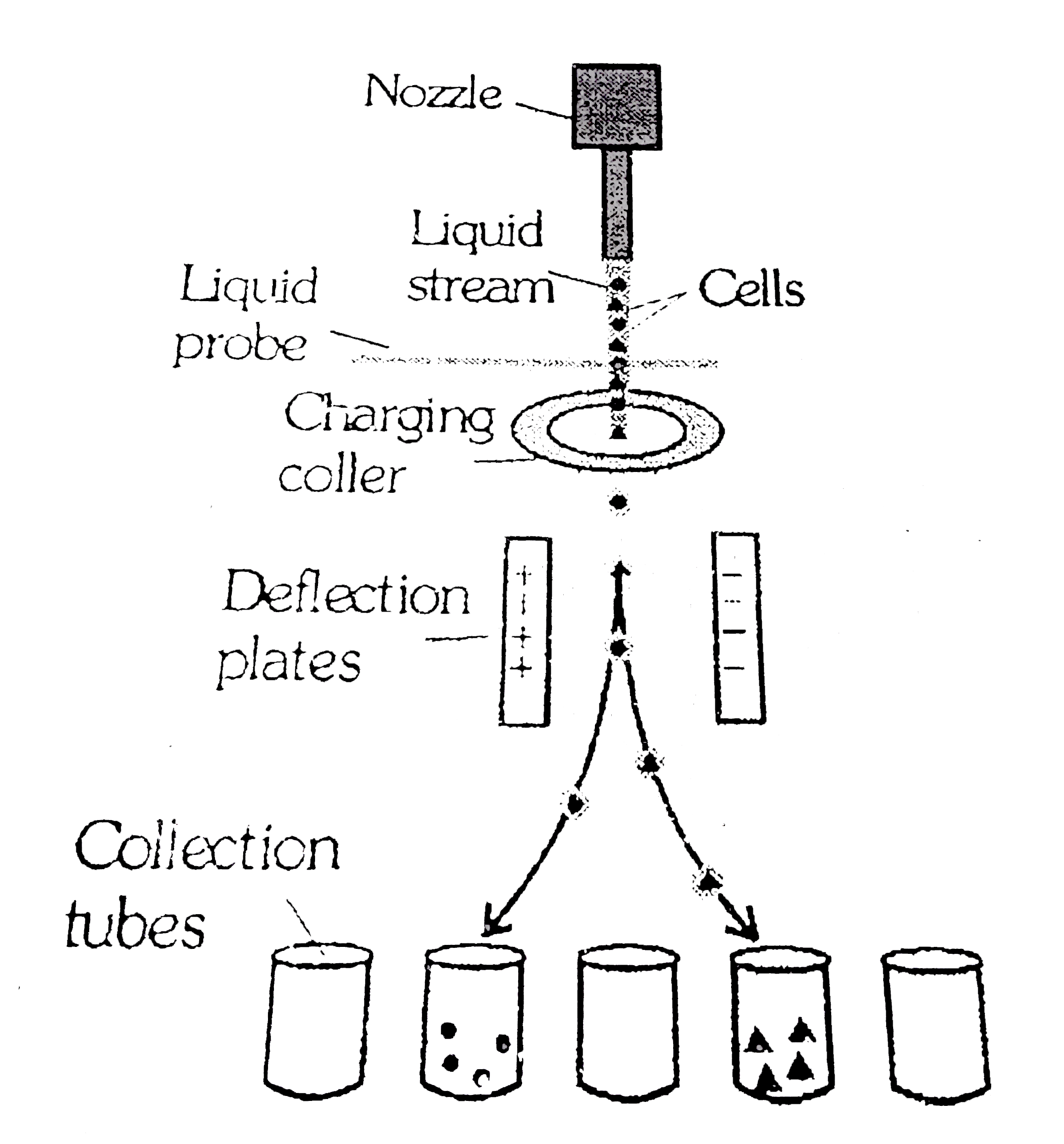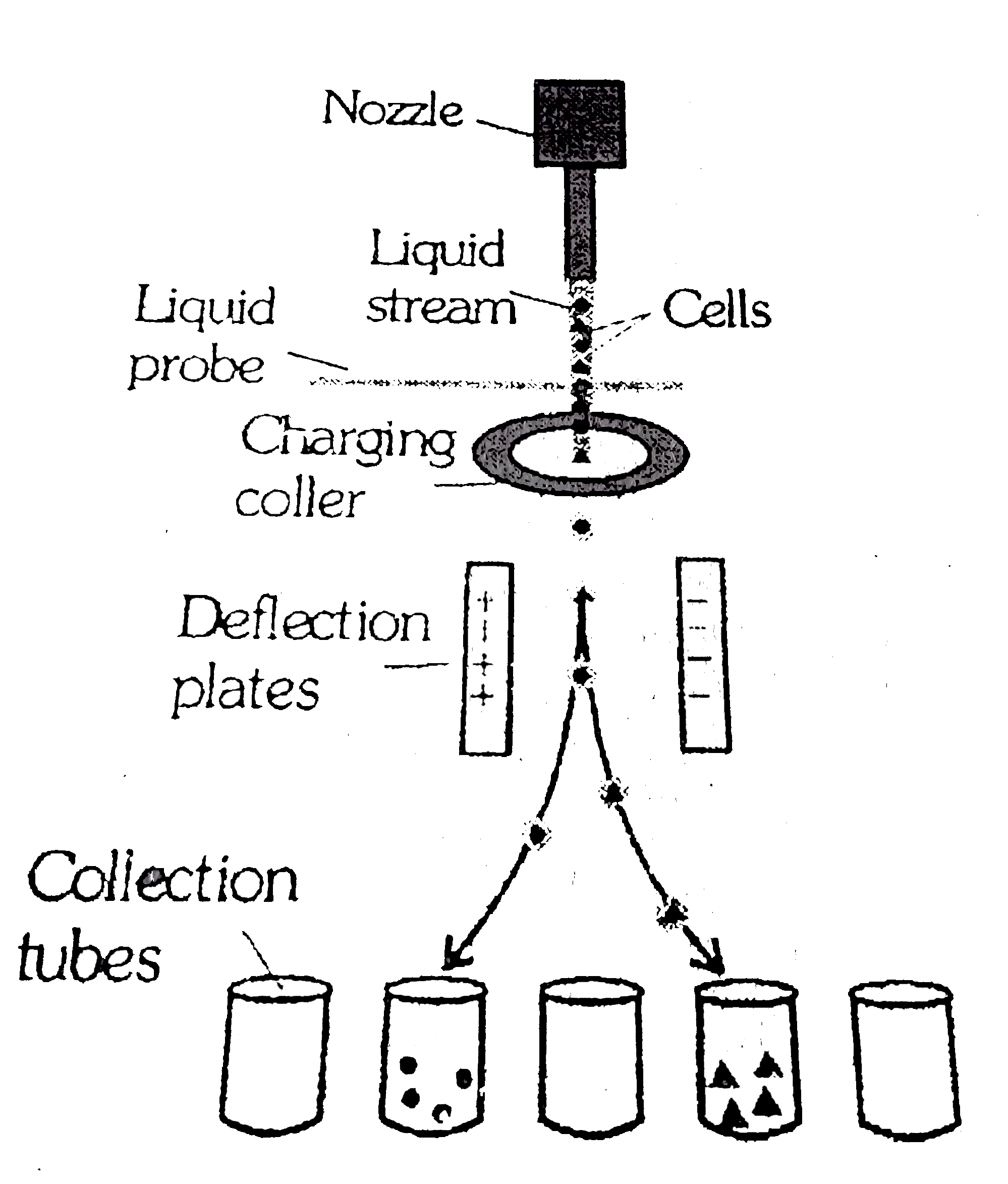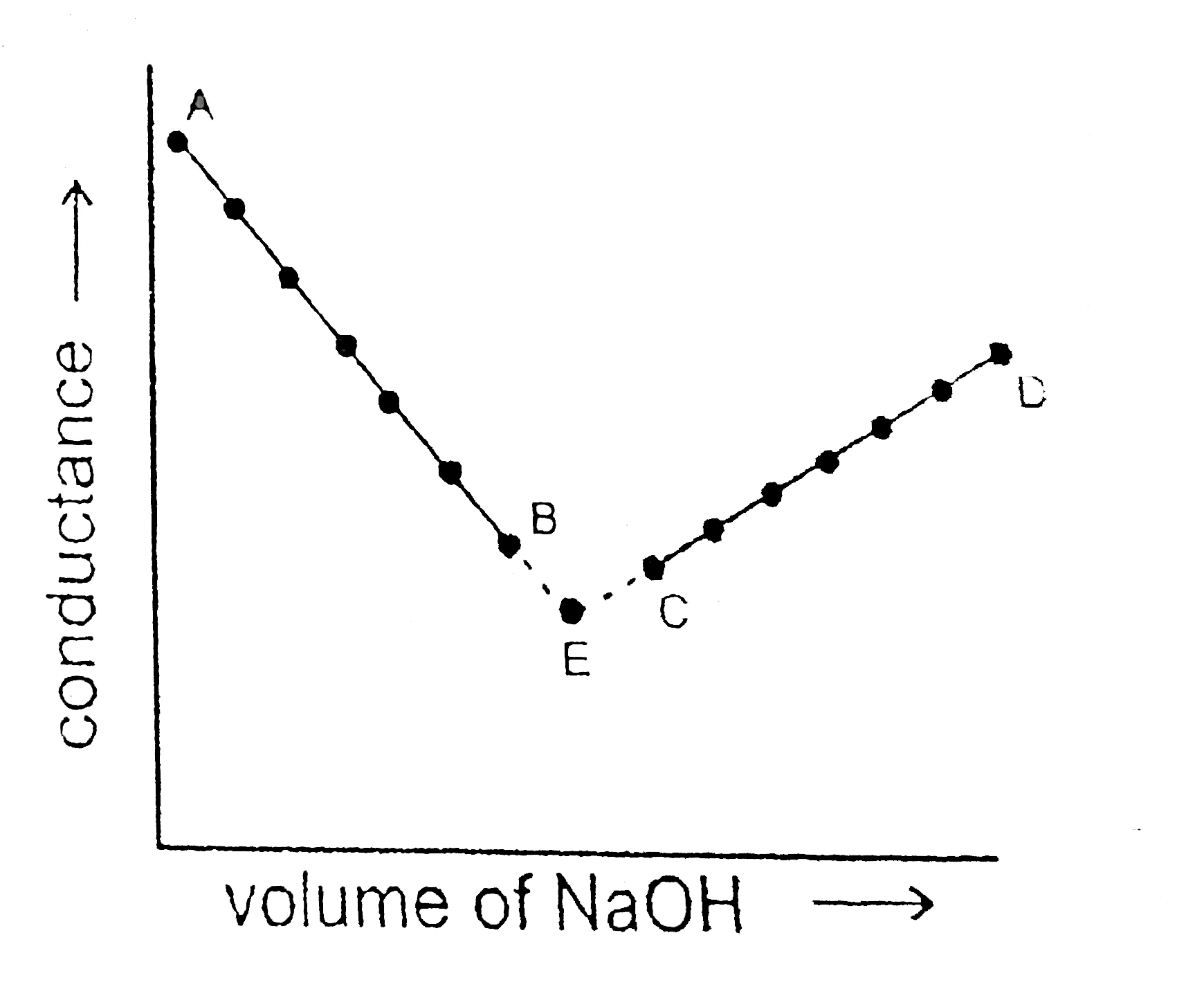A resistance of 50Ω is registered when two electrodes are suspended into a beaker containing a dilute solution of a strong electrolyte such that exactly half of them are submerged into solution as shown in figure. If the solution is diluted by adding pure water (negligible conductivity) so as to just completely submerge the electrodes, the new ressitance offered by the solution would be: ltbegt 
50Ω
100Ω
25Ω
200Ω
The correct Answer is:A
R=1klA The k is halved while the A is doubled. Hence R remains 50Ω
Topper's Solved these Questions
- ELECTROCHEMISRYBook:RESONANCE ENGLISHChapter:ELECTROCHEMISRYExercise:CBSE Problems
Explore 34 Videos
- ELECTRO CHEMISTRYBook:RESONANCE ENGLISHChapter:ELECTRO CHEMISTRYExercise:PHYSICAL CHEMITRY (ELECTROCHEMISTRY)
Explore 53 Videos
- EQUIVALENT CONCEPT & TITRATIONSBook:RESONANCE ENGLISHChapter:EQUIVALENT CONCEPT & TITRATIONSExercise:Part -IV
Explore 22 Videos
Similar Questions
In a conductivity cell the two platinum electrodes each of area 10 sq. cm are fixed 1.5 cm apart. The cell. Contained 0.05N solution of a salt. If the two electrodes are just half dipped into the solution which has a resistance of 50 ohms, find equivalent conductance of the salt solution.
View SolutionThe resistance of 0.5M solution of an electrolyte in a cell was found to be 50Ω. If the electrodes in the cell are 2.2cm apart and have an area of 4.4cm2 then the molar conductivity (in Sm2mol−1) of the solution is
View Solution
Knowledge Check
Two solutions of X and Y electrolytes are taken in two beakers and diluted by adding 500mL of water. Λm of X increases by 1.5 times while that of Y increases by 20 times, what could be the eletrolytes X and Y?
AX → NaCl , Y → KClBX → NaCl , Y →CH3COOHCX → KOH, Y → NaOHDX →CH3COOH , Y → NaCl
The resistance of a 1N solution of salt is 50Ω. Calculate the equivalent conductance of the solution, if the two platinum electrodes in solution are 2.1 cm apart and each having an area of 4.2cm2.
View SolutionOne normal salt solution surrounding two platinum electrodes, 2.1 cm apart and 6.3cm2 in area was found to offer a resistance of 50 ohm. Calculate the equivalent conductivity solution.
View SolutionFlow cytometry, illustrated in the figure, is a technique used to sort cells by type. The cells are placed in a conducting saline solution which is then forced from a nozzle. The stream breaks up into small droplets, each containing one cell. A metal collar surrounds the stream right at the point where the droplets seprate from the stream. Charging the collar polarizes the conducting liquid, causing the droplets to become charged as they break off from the steam. A leser beam probes the solution just upstream from the charging collar, looking for the presence of certain types of cells. All droplets containing one particular type of cell are given the same charge by the charging collar. Droplets with other desired types of cells receive a different charge, and droplats with no desired cell receive no charge. The charged. The charges droplets then pass between two parallel charged electrodes where they receive a horizontal force that directs force that directs them into different collection tubes, depending on air charge.

View SolutionFlow cytometry, illustrated in the figure, is a technique used to sort cells by type. The cells are placed in a conducting saline solution which is then forced from a nozzle. The stream breaks up into small droplets, each containing one cell. A metal collar surrounds the stream right at the point where the droplets seprate from the stream. Charging the collar polarizes the conducting liquid, causing the droplets to become charged as they break off from the steam. A leser beam probes the solution just upstream from the charging collar, looking for the presence of certain types of cells. All droplets containing one particular type of cell are given the same charge by the charging collar. Droplets with other desired types of cells receive a different charge, and droplats with no desired cell receive no charge. The charged. The charges droplets then pass between two parallel charged electrodes where they receive a horizontal force that directs force that directs them into different collection tubes, depending on air charge.

Another way to sort the droplets would be to given each droplet the same charge, then vary the electric field between the deflection plates. For the apparatus as sketched, this technique will not work because
View Solution
Strong acid versus strong base:
The principle of conductometric titrations is based on the fact that during the titration, one of the ions is replaced by the other and invariable these two ions differ in the ionic conductivity with the result that thhe conductivity of the solution varies during the course of the titration. take, for example, the titration between a strong acid, say HCl, and a string base, say NaOH before NaOH is added, the conductance of HCl solution has a high value due to the presence of highly mobile hydrogen ions. As NaOH is added, H+ ions are replaced by relatively slower moving Na+ ions. consequently the conductance of the solution decreases and this continues right upto the equivalence point where the solution contains only NaCl. Beyond the equivalence point, if more of NaOH is added, then the solution contains a excess of the fast moving OH− ions with the result that its conductance is increased ad it condinues to increase as more and more of NaOH is added. If we plot the conductance value versus the amount of NaOH added, we get a curve of the type shown in Fig. The descending portion AB represents the conductances before the equivalence point (solution contains a mixture of acid HCl and the salt NaCl) and the ascending portion CD represents the conductances after the equivalence point (solution contains the salt NaCl and the excess of NaOH). The point E which represent the minium conductance is due to the solution containing only NaCl with no free acid or alkali and thus represents the equivalence point. this point can, however, be obtained by the extrapolation of the lines AB and DC, and therefore, one is not very particular in locating this point expermentally as it is in the case of ordinary acid-base titrations involving the acid-base indicators.
Weak acid versus strong base:
Let us take specific example of acetic acid being titrated against NaOH. Before the addition of alkali, the solution shows poor conductance due to feeble ionization of acetic acid. Initially the addition of alkali causes not only the replacement of H+ by Na+ but also suppresses the dissociation of acetic acid due to the common ion Ac− and thus the conductance of the solution decreases in the beginning. but very soon the conductance start increasing as addition of NaOH neutralizes the undissociated HAc to Na+Ac− thus causing the replacement of non-conducting HAc with Strong-conducting electrolyte Na+Ac−. the increase in conductance continuous right up to the equivalence point. Beyond this point conductance increases more rapidly with the addition of NaOH due to the highly conducting OH− ions, the graph near the equivalence point is curved due to the hydrolysis of the salt NaAc. The actual equivalence point can, as usual, be obtained by the extrapolation method.
In all these graphs it has been assumed that the volume change due addition of solution from burrette is negnigible, hence volume change of the solution in beaker the conductance of which is measured is almost constant throughout the measurement.
Q. The nature of curve obtained for the titration between weak acid versus strong base as described in the above passage will be:
View SolutionA dilute solution NaCI was placed between two Pt electrodes 8 cm apart across which a potential of 4V was appied how far would the Na+ move in 2.5 hour? Ionic conductance of Na+ at infinit e dikution at 25∘C is 50.11 mho cm2
View SolutionA 100ml solution having activity 50 dps is kept in a beaker It is now constantly diluted by adding water at a constant rate of 10ml/sec and 2ml/sec of solution is constantly being taken out. Find the activity of 10 ml solution which is taken out, assuming half life to be effectively very large :
View Solution